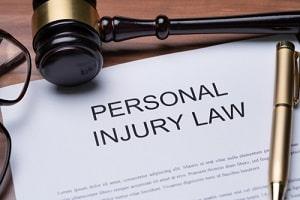121 S. Wilke Road, Suite 301, Arlington Heights, IL 60005
Home and Hospital Visits for Your Convenience
Serving Clients Across 7 Illinois Locations
Recent Blog Posts
How Can I Recover Compensation for Injuries Sustained in an Accident Caused by a Reckless Driver?
 According to Illinois law, driving with a “willful or wanton disregard” for others’ safety is considered reckless driving. Unlike speeding or other minor traffic infractions, reckless driving is a criminal offense. If you were or a loved one were hurt in a car accident caused by a reckless driver, you may be eligible for financial compensation. The type of compensation you may be entitled to will depend on the circumstances of the accident, the severity of your injuries, and the costs incurred by these injuries.
According to Illinois law, driving with a “willful or wanton disregard” for others’ safety is considered reckless driving. Unlike speeding or other minor traffic infractions, reckless driving is a criminal offense. If you were or a loved one were hurt in a car accident caused by a reckless driver, you may be eligible for financial compensation. The type of compensation you may be entitled to will depend on the circumstances of the accident, the severity of your injuries, and the costs incurred by these injuries.
Establishing the Reckless Driver’s Negligence
Criminal charges may bring a reckless driver to justice, but they do not provide restitution to the parties injured by the reckless driver’s actions. If your car accident was caused by a driver who was charged with reckless driving, you may bring a civil claim for damages against the driver in addition to the criminal charges he or she faces. However, a criminal conviction is not needed to recover compensation through a civil claim. You may still be entitled to financial compensation even if the driver was not charged or convicted of reckless driving.
Can I Sue for Medical Malpractice if My Pharmacy Made a Serious Error?
 Pharmacies have the exceptionally important responsibility of filling patients’ prescriptions and dispensing medication. If a pharmacist or other pharmacy worker makes a mistake, it is possible that a patient could receive the wrong medication or the wrong dosage of medication. This may lead to serious or even fatal consequences. If you or a loved one were harmed because of a pharmacy error, you may have a valid medical malpractice claim.
Pharmacies have the exceptionally important responsibility of filling patients’ prescriptions and dispensing medication. If a pharmacist or other pharmacy worker makes a mistake, it is possible that a patient could receive the wrong medication or the wrong dosage of medication. This may lead to serious or even fatal consequences. If you or a loved one were harmed because of a pharmacy error, you may have a valid medical malpractice claim.
Common Types of Pharmacy Mistakes
When patients take a prescription to the pharmacist to have it filled, most trust that they will receive the correct prescription in the dosage ordered by their doctor. Unfortunately, pharmacists sometimes make mistakes. If a patient does not recognize a pharmacy mistake before taking the medication, he or she may take a drug that leads to severe medical complications. Some of the most common pharmacy errors include:
How Could Illinois’s Comparative Negligence Law Affect My Car Accident Claim Payout?
 If you were hurt in an auto accident caused by the negligent, careless, or wrongful actions of another party, a personal injury claim may enable you to recover compensation for your damages. Many people who are interested in bringing an injury claim after a car accident worry about how their own actions may influence the viability of their claim. Fortunately, it may be possible to bring a successful Illinois injury claim and recover financial compensation even in cases involving shared fault.
If you were hurt in an auto accident caused by the negligent, careless, or wrongful actions of another party, a personal injury claim may enable you to recover compensation for your damages. Many people who are interested in bringing an injury claim after a car accident worry about how their own actions may influence the viability of their claim. Fortunately, it may be possible to bring a successful Illinois injury claim and recover financial compensation even in cases involving shared fault.
What If I Contributed to My Own Injuries?
Some people assume that an injured person cannot bring an injury claim and collect damages if he or she worsened his or her injuries in some way. For example, a person who sustains a severe head injury in a car accident may assume that he or she does not have a valid injury claim because he or she was not wearing a seatbelt or was speeding at the time of the accident.
How Do I Pursue Compensation from a Drunk Driver in Illinois?

In 2018, alcohol was a factor in 27 percent of all fatal car accidents in Illinois, resulting in hundreds of deaths, and many more people were injured in non-fatal crashes involving alcohol. Drunk drivers in Illinois often face serious criminal charges to deter them from continuing to endanger others on the road, but this does not necessarily mean that they are required to make amends to the people whom they have harmed. If you or a family member has been injured in an accident caused by a drunk driver, your best chance at compensation is to work with a reputable attorney to file a personal injury or wrongful death lawsuit.
Demonstrating Negligence in an Illinois Drunk Driving Accident
In most personal injury cases, obtaining compensation through a settlement or verdict is dependent on your ability to show that another party was negligent. This means that their behavior failed to account for their duty of care to you, and subsequently caused an accident resulting in your injuries and other damages.
Improper Loading and Maintenance Lead to Illinois Truck Accidents
 Commercial semi-trucks account for over 100 fatal crashes and 2,000 crashes causing injury in Illinois each year, and the majority of the victims are the occupants of other vehicles. Many of these accidents are caused by an error on the part of the driver, perhaps related to driver fatigue, speeding, or drunk driving. However, a substantial number are also caused by improper loading or maintenance before the truck even takes to the road. If you are injured in one of these accidents, it is important that you understand all possible options for compensation.
Commercial semi-trucks account for over 100 fatal crashes and 2,000 crashes causing injury in Illinois each year, and the majority of the victims are the occupants of other vehicles. Many of these accidents are caused by an error on the part of the driver, perhaps related to driver fatigue, speeding, or drunk driving. However, a substantial number are also caused by improper loading or maintenance before the truck even takes to the road. If you are injured in one of these accidents, it is important that you understand all possible options for compensation.
Trucking Industry Regulations for Maintenance and Loading
The Federal Motor Carrier Safety Administration (FMCSA) issues regulations for interstate truck drivers and trucking companies throughout the United States to ensure safe vehicle operation. Regarding maintenance, the FMCSA requires regular inspections of trucks and trucking equipment to identify any necessary repairs, as well as detailed record-keeping of repairs and maintenance. Any truck determined to be unsafe for the road must not be driven until it has been adequately repaired.
How Is Negligence Defined in an Illinois Personal Injury Lawsuit?

One of the most crucial parts of any personal injury lawsuit is proving negligence. In a medical malpractice suit, for example, a patient may only collect damages if the healthcare professional in question was negligent in his or her treatment of the patient. Similarly, a property owner or business owner who invites guests onto his property displays negligence if the building or grounds have obvious dangers that cause a guest or patron to suffer an injury.
When negligence causes an innocent party to experience damages like lost wages at work, expensive medical bills, or ongoing medical expenses, it is only fair that the person who is liable for the damages pays for them. Through a personal injury lawsuit, you may be able to collect compensation for damages, but the first step is proving negligence.
Will New Regulations Lead to Truck Accidents Caused by Driver Fatigue?

For many drivers, it can be dangerous to share the roads with semi-trailer trucks. Because commercial trucks are much larger and heavier than passenger vehicles, truck accidents are likely to lead to injuries for drivers, passengers, motorcyclists, pedestrians, or anyone else involved in a collision. Driver fatigue is one key factor that can lead to semi-truck crashes since truck drivers can become too tired to operate their vehicles safely after being behind the wheel for extended periods. Some recent changes to the regulations that govern the amount of time truck drivers can stay on the road have caused concern that driver fatigue will become more prevalent, leading to more commercial truck accidents.
New FMCSA Hours of Service Regulations
The Federal Motor Carrier Safety Administration (FMCSA), which governs the rules and regulations that apply to commercial motor vehicles, recently decided to update some of the rules regarding the allowed hours of service (HOS). The following changes are set to go into effect on September 29, 2020:
Can a Doctor Be Held Liable for Injuries Caused by Delayed Diagnosis?

For patients who are suffering from serious medical issues, the diagnosis of their condition is essential to make sure they can receive the proper treatment. This is especially true in cases involving diseases such as cancer, since surgery, chemotherapy, or other treatments must be performed before the illness progresses beyond a certain stage. A delayed diagnosis can cause a person to suffer serious harm, and in some cases, their condition may progress to the point where it is untreatable, resulting in wrongful death.
When Is a Delayed Diagnosis Considered Medical Malpractice?
Properly diagnosing a patient’s condition can often be difficult, since people can experience a wide variety of symptoms that can be interpreted in different ways. Doctors are trained to recognize the signs of serious illnesses, and if they are uncertain about a diagnosis, they should take the proper steps to gain as much understanding about a patient’s condition as possible. Some forms of medical negligence that could lead to a delayed diagnosis include:
Can Online Retailers Be Held Liable for Defective Product Injuries?

Online shopping has become a standard way that many people buy products, and it has become even more important during the COVID-19 pandemic since it allows people to receive necessities at their homes and minimize the risk of infections from traveling to stores to shop. However, one issue that has arisen for many online shoppers is the difficulty of determining who is responsible for injuries caused by defective products. A recent court ruling may help clarify these issues and provide consumers with the ability to pursue compensation from online retailers in product liability cases.
California Court Rules That Amazon Is Subject to Strict Product Liability
When consumers purchase products from an online retailer, they may not fully understand who manufactured, sold, or distributed the product, which can make it difficult to determine who is liable for injuries caused by product defects. This is particularly true on sites such as Amazon, where consumers can buy products from third-party sellers, with Amazon handling product warehousing and shipping.
Illinois Law Enforcement Takes Action Against Distracted Driving

Since cell phones became a part of our daily lives, distracted driving car accidents have skyrocketed. The numerous alerts, phone calls, and social media posts that we can scroll through and respond to have led many drivers to prioritize their notifications over their safety on the road. Many drivers may be willing to place themselves at risk to quickly respond to a text or answer a call, but they often forget that momentarily looking away from the road places other motorists at risk of injuries as well. For this reason, Illinois law enforcement has stiffened the penalties tied to distracted driving and one county has set up a special program to tackle this offense.
What Is Considered Distracted Driving?
There are three areas in which one can get distracted while driving: visual, manual, and cognitive. When you take your eyes off the road to grab something in your purse or send a quick text response, you are visually distracted. Manual distractions include anything that takes one or more hands off the steering wheel to perform an action, such as picking up a cup of coffee or your cell phone. Cognitive distractions occur when you are not paying attention to the road or what is going on around you. This may cause you to disregard the speed limit or fail to notice a car stopped right in front of you. Illinois stiffened its distracted driving penalties in 2019 by banning the use of handheld devices and labeling the penalty as a moving violation. These moving violations go on your record and just three in one year can lead to your driver’s license being suspended. This Illinois law prohibits the following:

 Spanish
Spanish


















